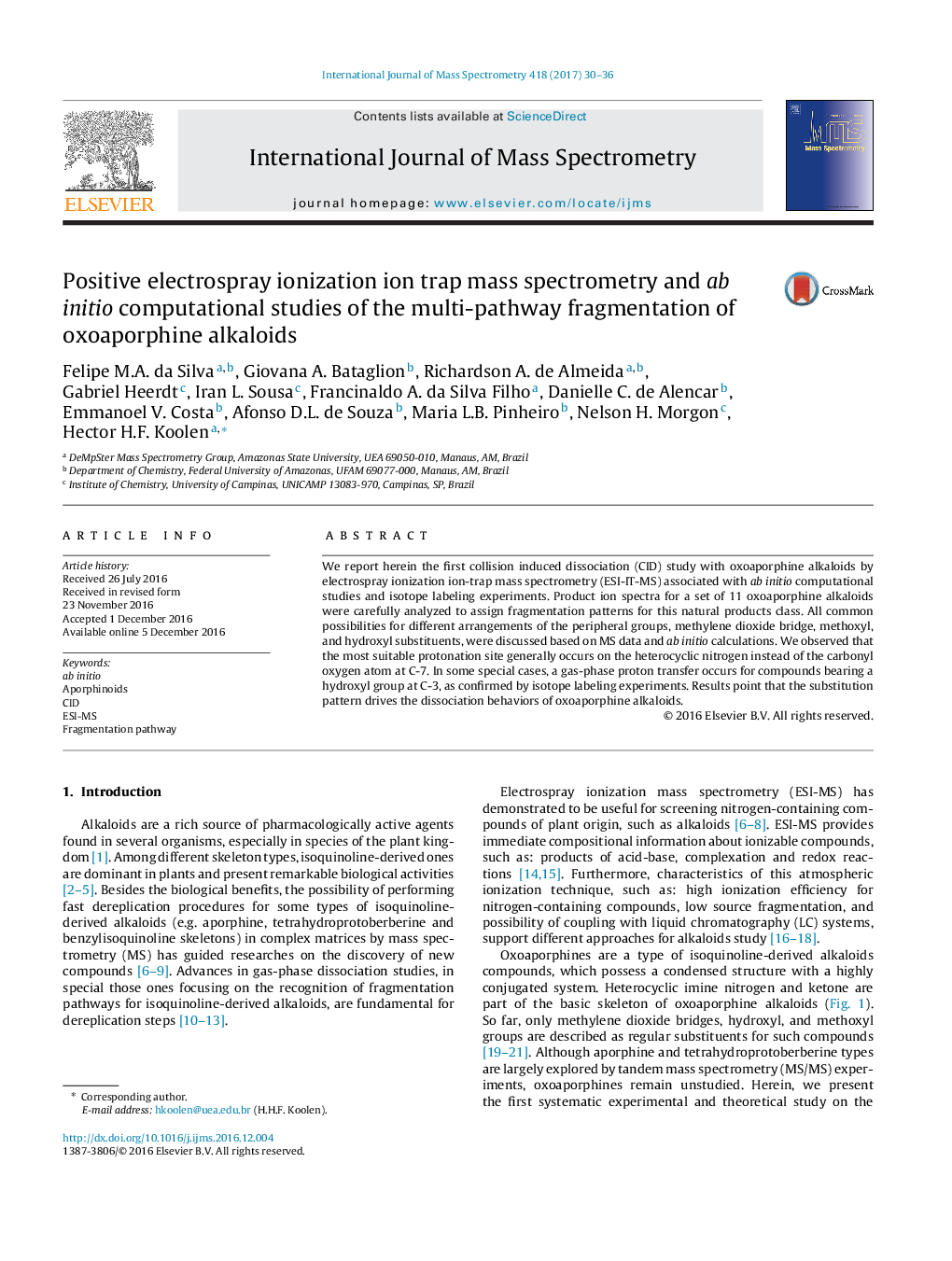| Article ID | Journal | Published Year | Pages | File Type |
|---|---|---|---|---|
| 5134213 | International Journal of Mass Spectrometry | 2017 | 7 Pages |
â¢Collision induced dissociation (CID) mechanistic study with oxoaporphine alkaloids.â¢The heterocyclic imine-like nitrogen is the preferential protonation site for oxoaporphine alkaloids.â¢Isotope labeling experiments and computational studies supported a multi-pathway fragmentation.â¢All possibilities of naturally occurring oxoaporphine alkaloids were explored.
We report herein the first collision induced dissociation (CID) study with oxoaporphine alkaloids by electrospray ionization ion-trap mass spectrometry (ESI-IT-MS) associated with ab initio computational studies and isotope labeling experiments. Product ion spectra for a set of 11 oxoaporphine alkaloids were carefully analyzed to assign fragmentation patterns for this natural products class. All common possibilities for different arrangements of the peripheral groups, methylene dioxide bridge, methoxyl, and hydroxyl substituents, were discussed based on MS data and ab initio calculations. We observed that the most suitable protonation site generally occurs on the heterocyclic nitrogen instead of the carbonyl oxygen atom at C-7. In some special cases, a gas-phase proton transfer occurs for compounds bearing a hydroxyl group at C-3, as confirmed by isotope labeling experiments. Results point that the substitution pattern drives the dissociation behaviors of oxoaporphine alkaloids.
Graphical abstractAll possibilities of naturally occurring oxoaporphine alkaloids were explored for their fragmentation pathway under collisional induced dissociation using an ion trap mass spectrometer.Download high-res image (170KB)Download full-size image
